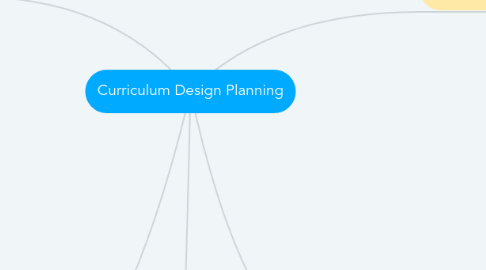
1. Self Actualization
1.1. Philosophy Connections
1.1.1. Pragmatism: focus on active and interesting learning. Growth and development of the individual.
1.1.2. Teacher is a guide and facilitates learning through problem solving
1.2. Curriculum Design
1.2.1. Learner as a Source: curriculum should be derived from the students- interests, attitudes and values. How do students create meaning?
1.2.2. Process Design: Students are at the center of unraveling understanding and content
1.2.3. Child-Centered Design
1.2.4. Experience Centered Design
1.2.5. Portions of Humanistic Design
1.2.6. Core Curriculum: students learn through experiences with real life problems and seek out common competencies
1.2.7. School to Work Curriculum: students learn by shadowing jobs. Student is the center of learning and active in taking away what they put into the experience
1.3. Purpose of Education: assisting students to reach their full potential
2. Social Reconstruction
2.1. Philosophy Connections
2.1.1. Reconstructionism/Pragmaticism: improve society. Education is for social reform
2.1.2. Teacher is a change agent and helps students learn about the issues with human kind and society.
2.2. Curriculum Design
2.2.1. Society as a Source: "School is an agent of society and should draw its curriculum from analysis of the social situation" (Ornstein & Hunkins, 2013)
2.2.2. Life-Situations Design
2.2.3. Reconstructionist Design
2.2.4. Portions of Humanistic Design
2.2.5. Radical Design
2.3. Purpose of Education: To prepare students for living in the world and shaping society
3. Academic Rationalism
3.1. Philosophy Connections
3.1.1. Perennialism: focus on the past and cultivate the intellect of the individual
3.1.2. Teacher supports rational thought and direct teaching- very traditional model
3.2. Curriculum Design
3.2.1. Moral Doctrine as a Source: look to our traditions and past to develop curriculum
3.2.2. Subject Design
3.2.3. Discipline Design
3.3. Purpose of Education: to teach important knowledge and events from the past. Direct instruction in traditional ways.
4. Cognitive Processes
4.1. Philosophy Connections
4.1.1. Essentialism: "promote intellectual growth and competency".
4.1.2. Teacher is the authority. Subjects are important with focus on reading, writing and math.
4.2. Curriculum Design
4.2.1. Knowledge as a source: focus on content that stimulates the mind of the individual and knowledge is the center
4.2.2. Subject Design
4.2.3. Discipline Design
4.2.4. Broads Field Design
4.2.4.1. Correlation design
4.3. Purpose of Education: develop intellectual processes and using subject matter. Focus on skills and processes
5. Curriculum as Technology
5.1. Philosophy Connecttions
5.1.1. ???
5.1.2. Essentialism: "promote intellectual growth and competency".
5.2. Curriculum Design
5.2.1. Science as a source: this design focuses on the scientific model and learning how to learn.
5.2.2. Technology as a curriculum: learners directed through carefully sequenced activities to develop understanding.

